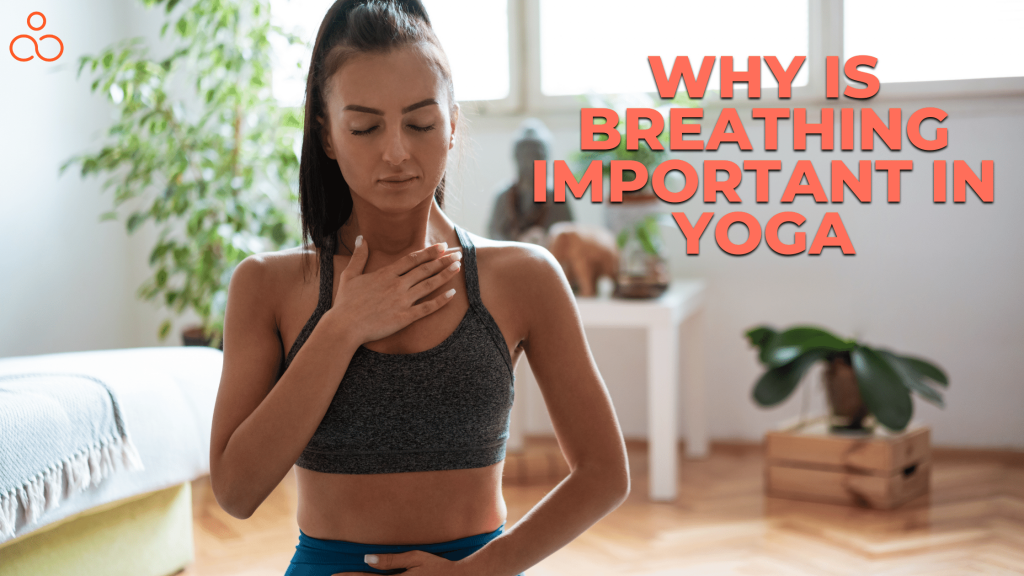Have you ever found yourself in a Yoga class with your instructor reminding you to pay close attention to your breathing? It might have made you wonder why is breathing important in Yoga? Today, we’ll uncover what breathing in Yoga is and why it’s essential. So, ready to learn how to inhale and exhale correctly? Let’s get started!
What is breathing in Yoga?
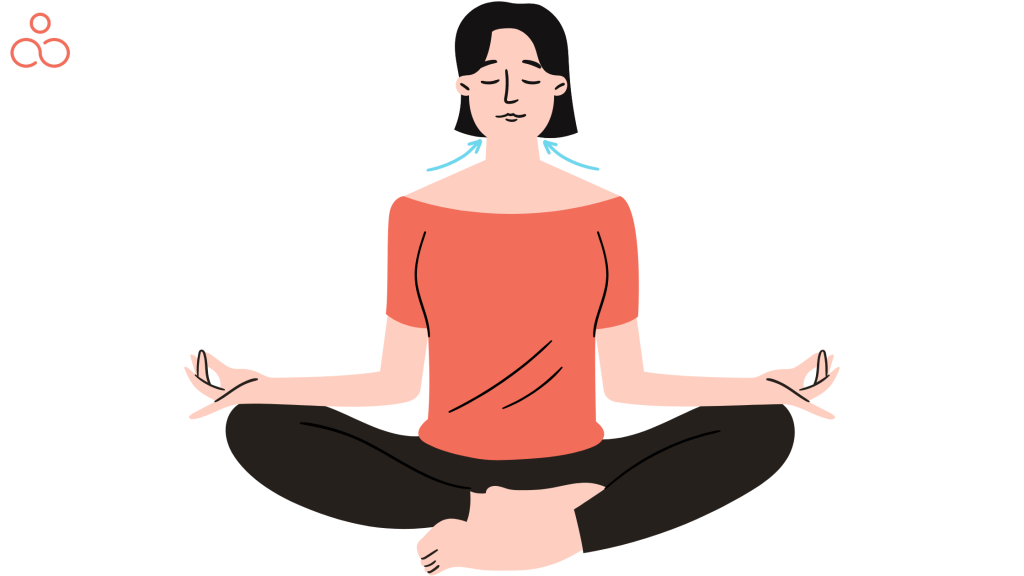
Yoga is about being conscious of your breath and connecting with the present moment. Pranayama, a Sanskrit term meaning “control of breath”, is an essential part of the practice. It involves adjusting your breathing to match the rhythm of the movements and poses. Additionally, you can do various breathing exercises even when not doing any Yoga poses.
Why is breathing important in Yoga?
When it comes to Yoga, breath is everything. It is through the breath that you can navigate different levels of consciousness. You can use your breath to connect with your subconscious mind. This will help you develop a more intuitive self-awareness and make you feel more connected to others. Through breathing, you also receive nourishment from the universe, which can help you maintain a healthy lifestyle and stay physically and mentally fit.
Breathing can help you to reduce stress and improve focus, concentration, and relaxation. As you practice Yoga, be mindful of your breath and use it to help guide your practice.
3 stages of breathing in Yoga
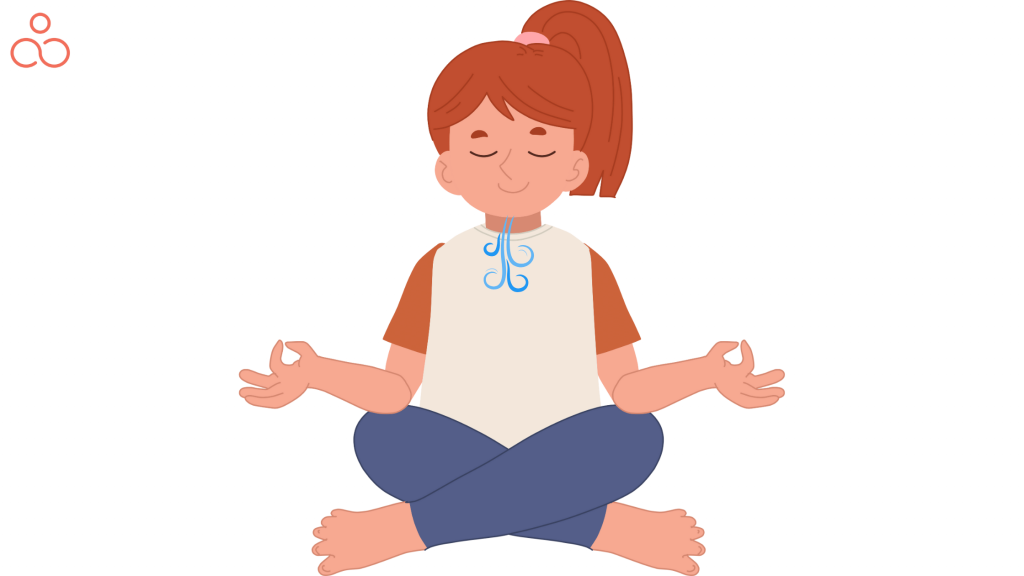
Inhalation is breathing in air or other gasses, such as oxygen, into the lungs. It is the first step of respiration and is essential for life.
Retention is the act of holding your breath for some time. This can be done for various reasons, for example, to increase oxygen saturation in the lungs or oxygen concentration in the bloodstream. It is the second step of respiration.
Exhalation is breathing out the air or other gasses from the lungs, such as carbon dioxide. It is the third step of respiration and is necessary for releasing waste products from the body.
What are the channels that connect the body to the breath?
The body is said to have 72,000 nadis, or channels, which are believed to be responsible for carrying energy and information throughout the body. Three of these nadis are particularly important: Ida, Pingala, and Sushumna. Maintaining the health and balance of these channels is believed to be essential for promoting physical and mental wellbeing. Manipulation and regulation of these channels through various methods, such as Yoga or meditation, can help to restore the body’s natural balance and promote overall well being.
What is the role of nadi in breathing?
Nadi is an ancient yogic practice that has been used for centuries to improve the quality of breathing.Nadis are channels in the body used in pranayama, or breathing exercises. They are important for yogic practices, as they act as pathways for the life force energy, or prana.
It involves the use of breath control techniques, such as pranayama, to regulate your breathing. This is done by focusing on the inhalation and exhalation of air and controlling the speed, depth, and duration of each breath. Nadi can help you to relax and improve the quality of your breathing, which can lead to improved physical and mental health. It can also help to reduce stress and anxiety, as well as improve your overall well- being.
3 different ways (nadis) of breath (prana) movement
The three bands of energy that run through your body are called ida, pingala, and sushumna.
Ida is the feminine force associated with the moon and has a cooling quality. It runs from the base of your spine to the crown of your head.
Pingala is the masculine force associated with fire and has a heating quality. It begins at the base of your spine and extends upward to the crown.
Sushumna represents balance in life: it begins at the base of your spine and extends up to the crown of your head. It means bringing together all elements of ourselves—our physical body, spiritual self, and emotional self—to create harmony within us. During most of the day, when we’re breathing unconsciously, our breath is controlled by the medulla oblongata (the primitive part of the brain). Switching to conscious breathing stimulates the cerebral cortex (the more evolved area of the brain). It’s at that moment that the magic starts to happen! Stimulating the cerebral cortex produces a calming and harmonizing effect on our emotions, which leads us to the next benefit of intentional breathing.
Discover the effects of Incorporating Deep Breathing Exercises in Yoga
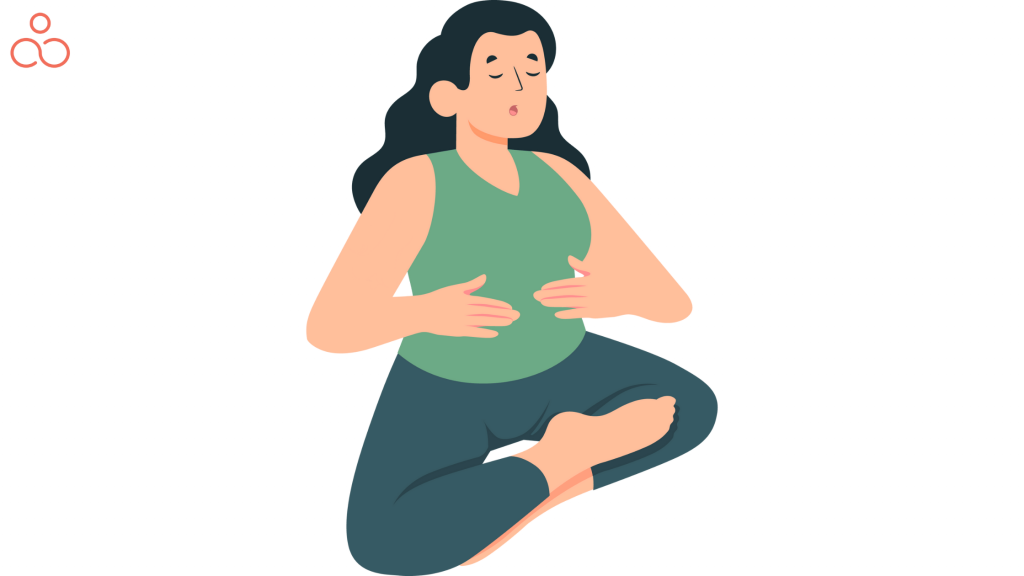
Biological effects
When you’re thinking about something, or even when you’re just daydreaming, your breath is usually controlled by the medulla oblongata. But when you actively focus on your breath, it stimulates the cerebral cortex. At this moment, the magic happens! Your brain starts to relax and calm down. As it does so, it starts releasing wonderful things like serotonin and dopamine—feel-good chemicals that make you feel great! And what’s more: they help keep you in a positive mood and make it easier for you to focus on what’s essential in life. This means that when you intentionally breathe, you activate your cerebral cortex. And as soon as you do that, you start to feel better. This is why intentional breath can be an excellent tool for those with trouble focusing—it helps them relax and better focus on what matters most!
Physical effects
Deep breathing has a range of physical benefits, including improved lung capacity and increased oxygen levels in the blood. It can also reduce anxiety, stress, and tension, allowing the body to relax and maintain a sense of calm. Regular deep breathing can improve heart health and help lower blood pressure. It can also help reduce inflammation and improve blood circulation, leading to improved digestion and better energy levels. Finally, deep breathing can strengthen the respiratory muscles and improve posture.
Mental effects
Deep breathing can have a profound effect on your mental state. It can help to reduce stress and anxiety levels, improve concentration, and even help you to become more mindful. Research has shown that deep breathing can help to activate the body’s relaxation response, which is essential for calming the mind and body. When practiced regularly, deep breathing can help to reduce symptoms of depression, boost energy levels, and even improve sleep quality. Deep breathing can also help to promote relaxation and a sense of well-being, which can be beneficial for those struggling with mental health issues.
Emotional effects
Deep breathing has been proven to have a positive effect on our emotional states. It has been found to reduce stress, anxiety and depression, while promoting feelings of calm and relaxation. It has also been linked to an increase in positive emotions such as contentment and happiness. In addition, deep breathing can help to increase focus and clarity of thought. It can be used as a tool to help manage emotions, build resilience and create a greater sense of wellbeing.
Spiritual effects
Deep breathing is a powerful and ancient technique for relaxation, spiritual connection, and stress-reduction. It has been used for thousands of years in yogic and meditative practices to help focus the mind and bring about a sense of peace and wellbeing. Deep breathing can help reduce tension, improve concentration, and even help to reduce physical symptoms of stress such as headaches, muscle tension, and digestive problems. By connecting with the breath, we can establish a connection with our inner wisdom and connect to the divine. Through deep breathing, we can be guided to explore our spiritual self and find inner peace. It is an invaluable tool for spiritual growth and personal transformation.
Benefits of deep breathing in Yoga
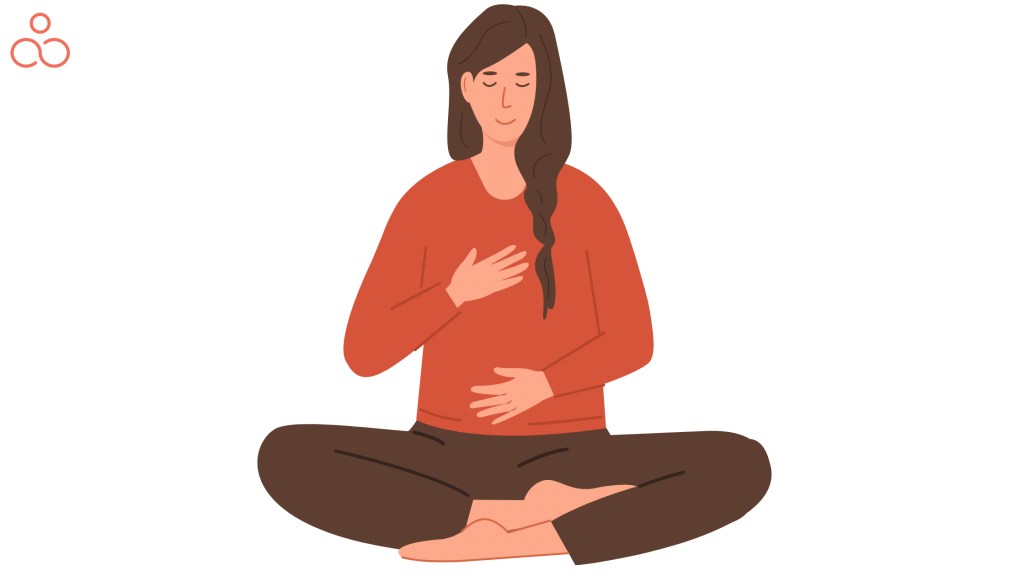
Helps you to stay present
Concentrating on breathing is a great way to help your mind stay present. Each exhalation is a reminder of a new, current moment. When a thought arises, direct your attention back to your breath.
Helps you to relax
When you take control of your respiration or draw air further into your body (by using the diaphragm), your body and mind become tranquil. Your muscles loosen and start resting, allowing any strain to slowly fade.
Helps you to move deeper into the asana, and your body
Inhaling can assist you with going further into each Yoga pose. Through breathing, you can take up more space in the asana and settle into your own body.
Helps you to move deeper into your self-awareness
You can become conscious of your physical sensations, feelings and emotions through each Yoga Asana. This awareness can then be utilized in your daily life and serve as a tool for personal growth.
Helps you to change unhealthy involuntary breathing
With continuous Yoga breathing practice, you will observe a transformation in your regular breathing routine. Your normal breathing will become more balanced, with a similar length for inhaling and exhaling.
Helps you to improve your focus
If you find yourself easily distracted, try breathwork! Taking deep breaths can raise the level of oxygen in the prefrontal cortex, which is related to higher-order reasoning and problem-solving.
Helps you to improve your digestion
Breathwork can be a valuable tool for better digestion. It helps reduce stress, lowering cortisol levels and thus allowing the body more energy to digest. Furthermore, deep breathing into the abdomen relaxes the stomach muscles, enhancing digestion.
Helps you with detoxification
Shallow breathing leaves us with a surplus of carbon dioxide in our body, which puts extra strain on our internal organs. Inhaling oxygen isn’t very useful if we don’t exhale the carbon dioxide that the body produces from oxidizing the oxygen.
Helps you to prevent injury
Taking a deep breath signals your body that you are in a safe environment, which helps your muscles relax and make it easier to move into different postures.
Helps you with improved circulation
Increasing oxygen intake allows the heart and other vital organs to work more effectively, boosting overall blood flow.
Breathing Poses to Enhance Your Well-Being
Nadi Shodhana or Alternate Nostril Breathing
Nadi Shodhana pranayama is a yogic breathing technique that helps to relax the body, reduce stress, and improve focus. The practice consists of taking deep breaths in and out through alternate nostrils. This helps to calm the body and clear the mind. Nadi Shodhana pranayama improves mental clarity, focus, and physical and mental balance. It also reduces your anxiety and stress, and respiration. Additionally, this practice can help to regulate hormones, improve digestion, and boost the immune system.
How to do it:
- Find a comfortable seated position.
- Close your eyes and take a few deep breaths, allowing your body to relax.
- Exhale deeply and close off your right nostril with your thumb.
- Inhale slowly through your left nostril.
- Close off your left nostril with your index and middle fingers.
- Exhale slowly through your right nostril.
- Inhale slowly through your right nostril.
- Close off your right nostril and exhale slowly through your left nostril.
- Repeat these steps for 5-10 minutes, focusing on your breath and maintaining a steady rhythm.
- When finished, release your nostrils and take a few deep breaths.
Ujjayi or Ocean’s Breath
Ujjayi pranayama is a type of breath control used in Yoga and meditation. It involves working with the breath to build strength, power and focus. The benefits of Ujjayi pranayama can be numerous. It can help improve the health of the lungs, calm and focus the mind, and improve overall physical and mental well-being. It can also help reduce stress levels and increase relaxation. Furthermore, it can help people to become more mindful and aware of their bodies and breath.
How to do it:
- Begin in a seated position, either in a chair or on the ground.
- Close your eyes and take a few deep breaths, focusing on the breath.
- Place your hands on your abdomen and inhale deeply while contracting the back of your throat, creating a sound like the ocean.
- Exhale through your nose and repeat the process.
- Continue to practice Ujjayi Pranayama for 5-10 minutes.
Shiitali Kumbhaka or the cooling breath
Shiitali Kumbhaka Pranayama reduces stress and anxiety, improves digestion, and even improves your immune system. It can also help to increase physical and mental strength, as well as improve your cardiovascular health. It is essential to practice this technique correctly and safely, so consult a Yoga teacher or experienced practitioner for guidance. When done correctly, Shiitali Kumbhaka pranayama can help you to feel more grounded and relaxed and can even help you to achieve better focus and concentration.
How to do it:
- Sit in a comfortable position, such as Sukhasana or Padmasana.
- Close your mouth and curl your tongue, forming a tube.
- Inhale deeply and slowly through your curled tongue, filling your lungs with air.
- Close both your mouth and nose and hold the breath inside your lungs.
- Release your nose, and exhale slowly and completely through your nose.
- Repeat the sequence for up to five minutes.
- As you do this, pay attention to how your breath and body feel. Feel free to adjust the length of your inhalation, exhalation and retention as needed.
Kapalbhati or skull shining breath
Kapalbhati Pranayama is a type of yogic breathing exercise that involves rapid and rhythmic breathing through the nostrils. It is believed to have numerous health benefits, including improved cardiovascular health, better digestion, decreased stress levels, and increased mental clarity. It is believed to help with weight loss, detoxification, and improved circulation. Additionally, Kapalbhati Pranayama can help to improve overall energy levels. It also balances the left and right sides of the body and improves overall well-being.
How to do it:
- Begin in a comfortable seated position, with your spine straight, and your shoulders relaxed.
- Close your eyes and take a few deep breaths to relax your body.
- Inhale deeply and forcefully, contracting your abdominal muscles as you exhale.
- When you exhale, let the breath come back naturally.
- Repeat this cycle of inhalation and strong exhalation for up to 10 minutes.
- After completing the exercise, take a few deep breaths and open your eyes.
- Relax in this position for a few moments, feeling the effects of the exercise.
Brahmari or the humming breath
Brahmari Pranayama is an ancient form of Yoga breathing, also known as bee breath or humming bee breath. It is said to have many benefits, including calming the mind, relieving anxiety, and improving digestion. Additionally, it can help reduce stress, improve sleep, and reduce cortisol levels, the hormone associated with stress and anxiety. Finally, it can help to improve concentration and focus and can be used to aid in meditation.
How to do it:
- Find a comfortable position on the floor or in a chair.
- Close your eyes and take a few deep breaths.
- Place your hands on your knees and focus on your breath.
- Inhale deeply, exhale, and make a humming sound like a bee.
- Continue to exhale and make the humming sound for as long as possible.
- Inhale again, and then repeat steps 4 and 5.
- When you are finished, take a few more deep breaths and relax.
Bhastrika or the bellows breath
Bhastrika Pranayama, also known as “Breath of Fire,” is an ancient yogic breathing technique that helps to invigorate the body and mind. It is said to help purify the body and help clear the mind of stress and anxiety. Bhastrika Pranayama can help to strengthen the lungs, improve circulation, and regulate the body’s metabolism. It can also help to reduce fatigue and increase energy levels. Regular practice of Bhastrika Pranayama can help to improve overall physical and mental health.
How to do it:
- Get into a comfortable position, cross-legged on the floor or seated in a chair with a straight back.
- Place your hands on your knees with your palms facing up and your eyes closed.
- Take a deep and slow inhalation, then take a forceful exhalation through your nose. Do this for a few rounds to get used to the movement.
- Once you are comfortable, start breathing in and out rapidly, with equal pauses between each breath.
- Continue this for about 10-20 rounds, focusing on the breath and the movement of your abdomen.
- To finish the exercise, take a deep inhalation and a long, slow exhalation.
- Relax and observe your breath for a minute or two before coming out of the pose.
Surya Bhedana or the solar breath
Surya Bhedana is a breathing exercise that involves the regulation of breath through the left nostril. Surya Bhedana is believed to have many benefits, including the stimulation of the solar plexus chakra, the improvement of mental and physical health, and the development of spiritual awareness.
How to do it:
- Begin in a comfortable seated position, either on the floor or in a chair.
- Close your eyes, and take a few moments to settle into the breath.
- When you breathe in, bring the palms of your hands together in front of your chest.
- Exhale through the nose, and press the hands away from the chest.
- Inhale through the nose, and press the hands back together in front of the chest.
- Exhale through the nose, and press the hands away from the chest.
- Continue this cycle of inhaling and pressing the hands together and exhaling and pressing the hands away for 3-5 minutes.
- When finished, relax the hands, and take a few moments to observe the breath.
- To end the practice, take a few deep breaths and open your eyes.
Chandra Bhedana or the lunar breath
Chandra Bhedana Pranayama is a Yoga breathing technique that reduces stress and improves overall health. It is believed to enhance the flow of prana, or vitality energy, in the body. The practice works by creating alternating pressure in the nostrils, which helps open the body’s energy pathways. It is also said to help with concentration and focus. The benefits of Chandra Bhedana Pranayama include improved circulation, reduced stress and anxiety, improved digestion, and improved mental clarity. It is an excellent practice for anyone looking to reduce stress and improve overall health.
How to do it:
- Start by sitting in a comfortable position with your spine erect and relaxed.
- Place your right thumb on your right nostril and your right index and middle finger on your left nostril.
- Put your right thumb over your right nostril and draw in the air with your left nostril in a slow manner.
- Close the left nostril with your right index and middle finger and exhale through the right nostril.
- Inhale through the right nostril and close it with your right thumb.
- Exhale through the left nostril and close it with your right index and middle finger.
- This completes one round of Chandra Bhedana Pranayama.
- Repeat this process for 5-10 minutes, then relax.
Pranayama active yogic breathing
Active yogic breathing is an excellent way to reduce stress and improve physical and mental well-being. It helps to calm the mind and relax the body. This type of breathing also helps increase oxygen levels in the body, reducing fatigue and improving overall health. It can also improve focus and mental clarity, benefiting daily tasks. The practice of active yogic breathing can also help to reduce anxiety, increase energy levels, and improve overall mood.
How to do it:
- Begin by getting into a comfortable position, seated or lying down.
- Take a few slow, deep breaths to relax and center yourself.
- Place one hand on your belly and the other on your chest.
- Inhale slowly and deeply, allowing your belly to expand outward as your lungs fill up with air.
- Hold your breath for a few seconds.
- Exhale slowly, allowing all the air from your lungs to be released.
- Repeat this cycle for several minutes, focusing on each breath and allowing your body to relax.
Digra pranayama or three part breath
Digra pranayama is a breathing technique used to balance the energy in the body and mind. It is believed to help clear out stress, increase focus, and improve overall well-being. Benefits of practicing Digra pranayama include improved mental clarity, concentration, physical and psychological endurance, physical and mental well-being, and mood and attitude. Additionally, this breathing technique can help with relaxation and release negative energy.
How to do it:
- Sit in a comfortable, cross-legged position on the floor or on a Yoga mat. Place your hands on your knees with your palms facing up.
- Take a deep breath in and out, inhaling and exhaling through your nose.
- On your next inhale, keep your breath in your lungs and slowly raise your arms above your head.
- Begin to exhale slowly, counting to four as you do so.
- As you exhale, bring your arms down to your sides.
- Repeat the cycle of inhaling, raising your arms, exhaling, and lowering your arms for five to ten cycles.
- After the last cycle, take a few moments to sit in stillness and observe the effects of the exercise.
10 secret tips
- Let it all out! For poses that compress your front, like Seated Forward Bend, make sure to exhale.
- Not just forward bends, but twists and side bends, too—try to let out all the air while getting into those shapes. Even if it means you sound like a whale!
- Breathe in as you open up the front part of your body. When doing so, you’ll feel your chest and abdomen expand.
- To intelligently link your breath with movement, practice any poses that open the front of your body with an inhalation. Examples include backbends, lifting your head, and raising your arms.
- Once you inhale, don’t move. You can prolong the benefits of the inhalation by pausing for a bit after it.
- When you’re done with the inhalation, your chest and stomach will be completely packed. Your body will fight any further movement. So, only hold your breath after inhaling when you’re in an asana, not when doing another exercise.
- Looking to add a bit of flow in your practice? Then try moving while you pause your breath after exhalation.
- Taking a momentary pause makes your body more flexible and better prepared for movements like forward bending. So don’t be afraid to put that pause to use and get your flow on!
- Let out a big, calming breath. That’s the key to Yoga – using the breath to move and stay in the poses. You push your body too hard if your breath feels strained or tight.
- The whole point of Yoga is to relax and move with smooth, effortless breaths. Otherwise, the asana won’t be beneficial and won’t be true Yoga. Use your breathing as a guide throughout your practice.
Why is deep breathing important in Yoga?
Deep breathing is an important element of Yoga because it helps to bring about relaxation and focus. It is recommended to take between 5 and 10 deep breaths each day in order to maintain optimal health. Taking more breaths can help to reduce stress and anxiety as well as to improve concentration., while taking fewer breaths can lead to shallow, short breaths which can result in fatigue and poor sleep. It also helps to bring oxygen to the cells, which helps to improve physical and mental health. By taking deep breaths, you are able to tap into your inner wisdom and gain clarity, focus, and peace. Deep breathing helps to restore balance, and to bring relaxation and a renewed sense of energy.
Relationship between deep breathing and life expectancy
Breath is the essence of life. This delicate and intricate process usually goes unnoticed, as your body exhales and inhales without you ever realizing. Without it, however, life would not be possible. Fortunately, by taking certain measures to ensure proper breathing, you can live a longer, healthier, and more satisfying life. Research has shown that deep breathing can help improve the body’s ability to absorb oxygen, which can then be used to support the body’s vital organs. By increasing the body’s oxygen intake, deep breathing can help the body to function better and stay healthier for a longer period of time. Here is a table that explains the link between deep breathing and a longer life.
| Birds/Animals/Mammals/Reptiles | Lifespan | Heartbeat per minute |
| Sparrow | 3 years | 400-500 |
| Rat | 2-3 years | 250-450 |
| Rabbit | 8-12 | 135-325 |
| Cat | 15-20 years | 140-220 |
| Dog | 10-13 years | 60-140 |
| Tiger | 20 years | 60-100 |
| Cow | 20 years | 60-70 |
| Elephant | 60-70 years | 30-40 |
| Tortoise | 150 years | 20-30 |
| Blue Whale | 90 to 100 years | 5-6 |
FAQs
Why is breathing important in Yoga and meditation?
Breathing is an essential part of both Yoga and meditation. It allows us to bring more oxygen into our bodies. It can help to reduce stress, promote relaxation, and increase focus. In Yoga, proper breathing can help us to stretch deeper and move with more control. In meditation, breathing can help us stay focused and achieve a deeper awareness. By focusing on and practicing our breathing, we can reap the many benefits that come with it.
How to breathe correctly while doing different Yoga poses?
Breathing correctly is an essential part of any Yoga practice. When doing different poses, paying attention to your breathing is vital. Engage your diaphragm and be conscious of your breath. Inhale deeply and exhale slowly, allowing your body to relax into the pose. Make sure to breathe evenly throughout the pose, inhaling and exhaling simultaneously. This will help your body to stay relaxed and focused on the carriage.
What is the relationship between prana and pranayama?
Prana and Pranayama are related because both are forms of breath control. Prana is a type of Yoga in which the breath is used to create a state of mental and physical relaxation. Pranayama is a type of breathing exercise which involves controlling and regulating the breath. Prana and Pranayama have been used to help improve physical and mental well-being.
What is conscious breathing in Yoga?
Conscious breathing in Yoga is an integral part of the practice. It involves being mindful of your breath, taking deep and slow breaths, and paying attention to how the breath affects your body and mind. This practice helps create balance, focus, and relaxation, which are crucial for Yoga. Conscious breathing can also help reduce stress, improve digestion, and increase energy levels. Practicing mindfulness can be a game-changer, allowing you to gain greater self-awareness and an improved understanding of your environment.
What does controlling the breath mean in Yoga?
Controlling breathing means using specific techniques to alter your breathing pattern. This is done by controlling the length of your inhalation, exhalation or by holding your breath at particular points during the cycle. Controlling the breath is a critical component of many Yoga practices, as it helps to focus the mind and bring the body into a state of relaxation or meditation.
How many conscious breaths to take per day?
Taking a few conscious deep breaths throughout the day can be a great way to help reduce stress and relax your body. It is recommended to take at least 3 to 5 deep breaths per day. To do this, start by taking a deep inhale through your nose and exhale slowly out through your mouth. During the exhale, try to focus on relaxing your entire body. Breathing exercises can be done anywhere and can be used as a calming tool when feeling anxious or overwhelmed.
Conclusion
Yoga breathing is a great way to boost your physical and emotional health. So, if you’re ready to take up this ancient practice, remember to make conscious breathing a part of your daily life. When you’re feeling stressed or worn out, focus on deep inhales and exhales. Put in the work, and you’ll be amazed at what you can accomplish!

